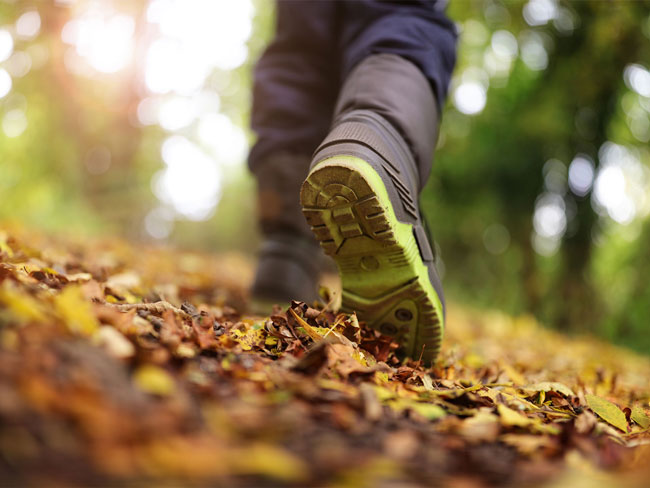Keeping Seasonal Affective Disorder at Bay
- By Jonanna Widner
- Reading Time: 4 mins.
 For some people, having the “winter blues”—feeling down, dragging, and detached during the long months of short days—is more than just an expression. Those who suffer from seasonal affective disorder (SAD) find the lack of sunlight can turn wintertime into a daily struggle.
For some people, having the “winter blues”—feeling down, dragging, and detached during the long months of short days—is more than just an expression. Those who suffer from seasonal affective disorder (SAD) find the lack of sunlight can turn wintertime into a daily struggle.
According to the Mayo Clinic, “…SAD is a type of depression that’s related to changes in seasons…” most often affecting people during the winter months.
Fortunately, whether you feel the occasional blahs or more sustained symptoms, there are many ways to help alleviate the mood changes that can come with winter. Even incorporating one or two of these strategies into your winter habits can make a big difference.
Get Some Light
Winter’s shorter days and dramatic reduction in sunlight can mess with your circadian rhythms. These are the rhythms of sleep and wakefulness our body is biologically wired to follow, taking cues from natural light. When it’s light outside, your body is conditioned to be more alert, active, and, well, awake. When it’s dark, that’s your body’s cue to sleep. For most of us, winter means a few hours less daylight in the morning and evening, but there are plenty of places in the U.S.—from upstate New York through the Great Lakes region, as well as the Pacific Northwest—where the sun shines only about 30 percent of the time during the winter months.
Natural sunlight helps regulate sleep cycles—the more sunlight you get, the more balanced you feel—and can also help produce serotonin in your body. Serotonin is a brain chemical that affects your mood, and lower serotonin levels often lead to depressive symptoms. Increasing your serotonin levels can contribute greatly to elevating your mood. Try sneaking in some sunlight by taking a walk on your lunch hour, or leave work early enough to catch some rays. If you exercise or meditate, try bundling up and doing it outside so can you reap the benefits of any available natural light. If that’s not an option, purchasing a light therapy box might help you get through the darkest part of winter.
Make Time for Exercise
That pesky serotonin drop is one of the biggest contributors to winter sadness. Fortunately, exercise provides a quick, easy, and inexpensive way to raise serotonin levels. If you already work out regularly, try adding an extra day to your regimen or tacking a few extra minutes onto your daily workout.
If you don’t have a routine, there’s no time like the present to start one. Of course, getting yourself up and moving on very cold or gloomy days can be hard, so try pairing up with friends or family, or signing up for a class, to stay motivated. And, don’t overwhelm yourself; aim for just 20 minutes of movement a day and build from there. Once you’ve started moving around, it’s more than likely you’ll feel good enough to keep at it, and afterward you’ll be glad that you made the effort.
Watch Your Alcohol Intake
Holiday festivities can be quite boozy, and one of the ironies of the season is that popular treats like rum-laced eggnog and other cocktails may feel great in the moment, but alcohol can act as a depressant. With all the parties and festivities, you may find yourself drinking more than usual, and it can be hard to say no. Don’t feel like you need to abstain altogether—but if you consume alcohol, be mindful and exercise moderation. It’s perfectly fine to skip a party if you’re not feeling it, say no to an extra pour of champagne, or volunteer to be a designated driver. Far better to wake up feeling well-rested and reasonably refreshed, than deal with unpleasant hang-over symptoms like headaches and dehydration.
 Volunteer and Socialize
Volunteer and Socialize
The National Institutes of Mental Health lists “social withdrawal” among the symptoms of SAD—they even liken it to hibernating. That’s why it can be helpful to incorporate social activities into your schedule, even when the weather and your mood make it feel like a challenge. Make the effort to stay in touch with friends and loved ones, and attend social events, or schedule something low-key—like brunch or a movie date—if that feels more manageable.
Getting out and helping others is another great way to combat the depressive effects of SAD.
Numerous studies show that volunteering helps to reduce depression, anxiety, and stress. It’s been linked with positive physical health benefits, such as lower blood pressure, as well. If you want to combine volunteering with more sunlight and fresh air, look for an outdoor opportunity, such as park trail maintenance, youth sports, or animal care. Or, maybe you would prefer to bring baked goods to a senior center, volunteer to join their weekly card game, or sit in on a craft activity? Whether your volunteer activity takes place outdoors or inside, the added social interaction plus the positive feeling of serving others can help to boost your winter mood.
Most people will only ever experience a mild form of the winter blues. But if none of the above strategies is working and you find yourself persistently or severely depressed, it’s important to consult a health professional. Otherwise, these tips and suggestions should help you mitigate any SAD symptoms, until spring arrives again.
Want more health tips? Subscribe to The Weekly Bite!
Jonanna Widner lives in Portland, OR, where she writes about sports, music, travel, and fitness.


